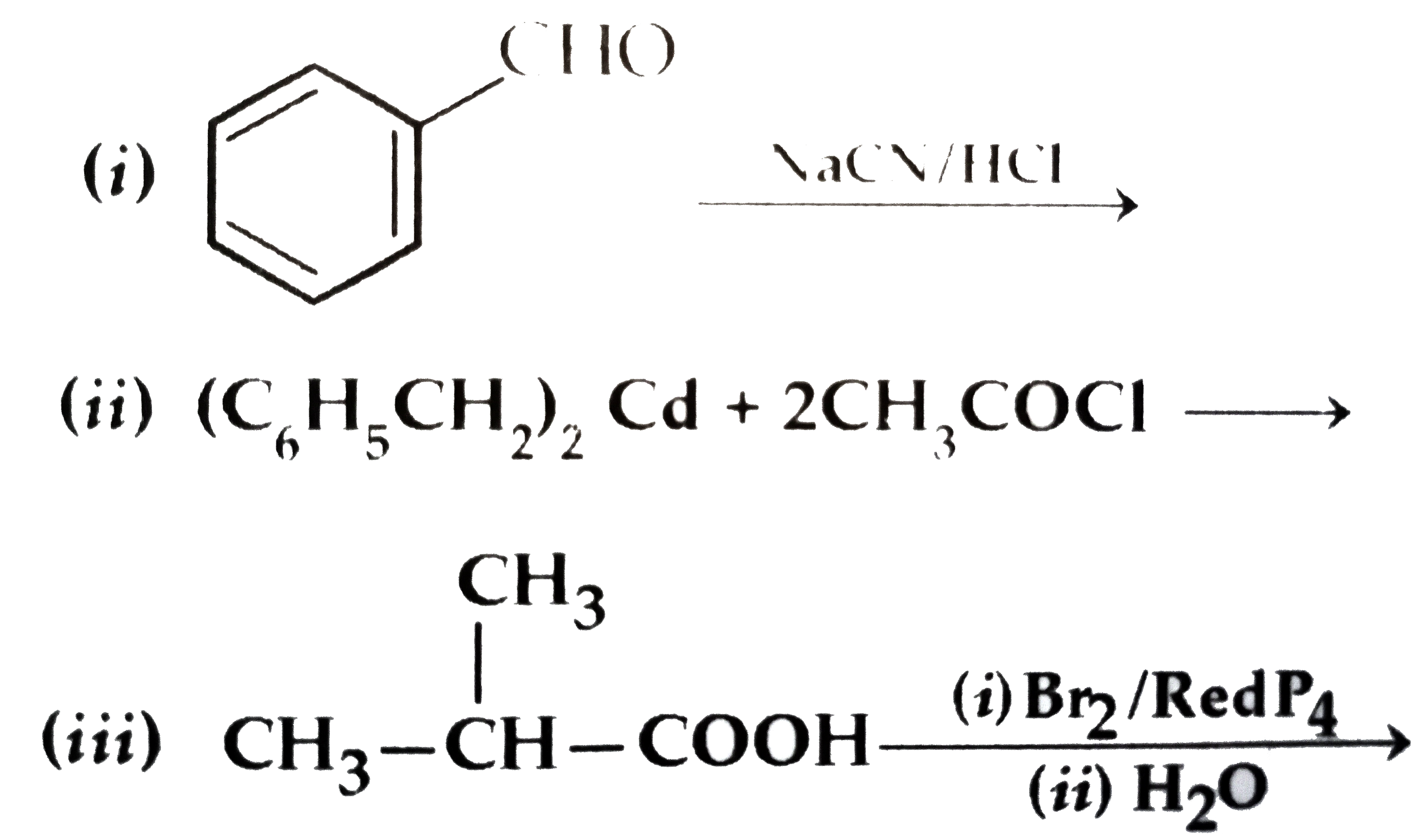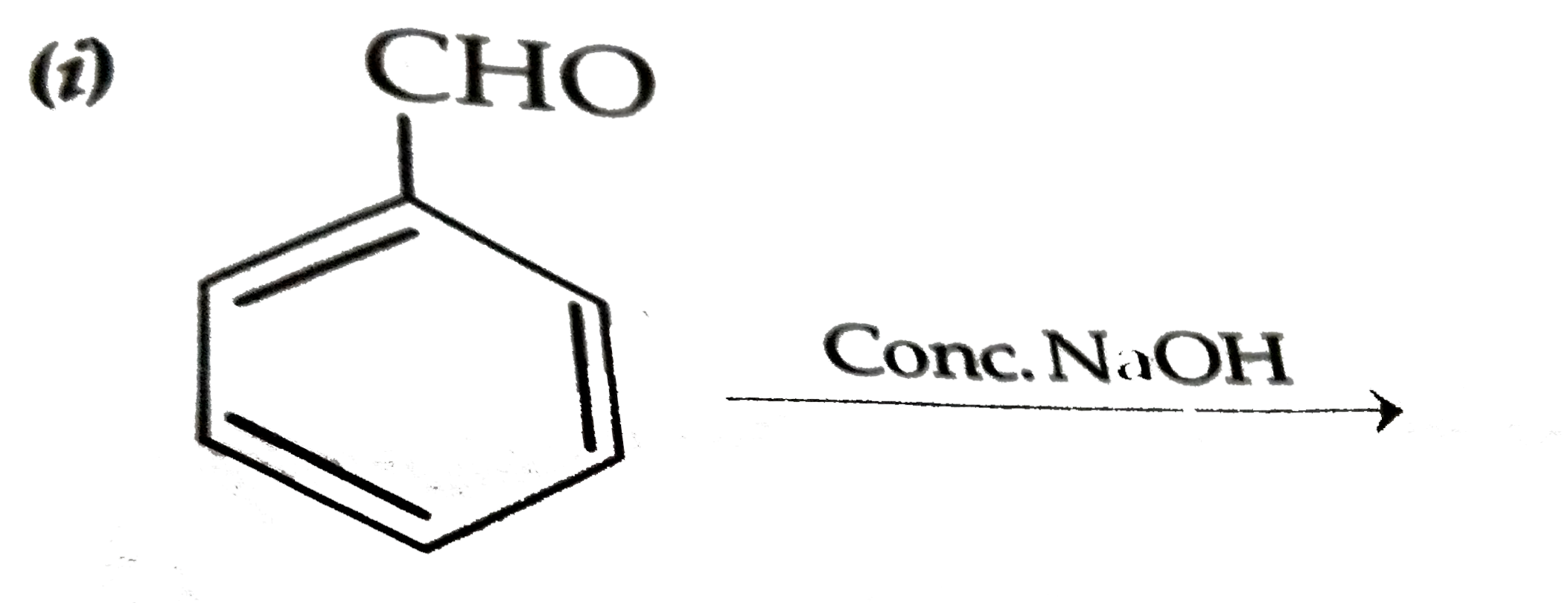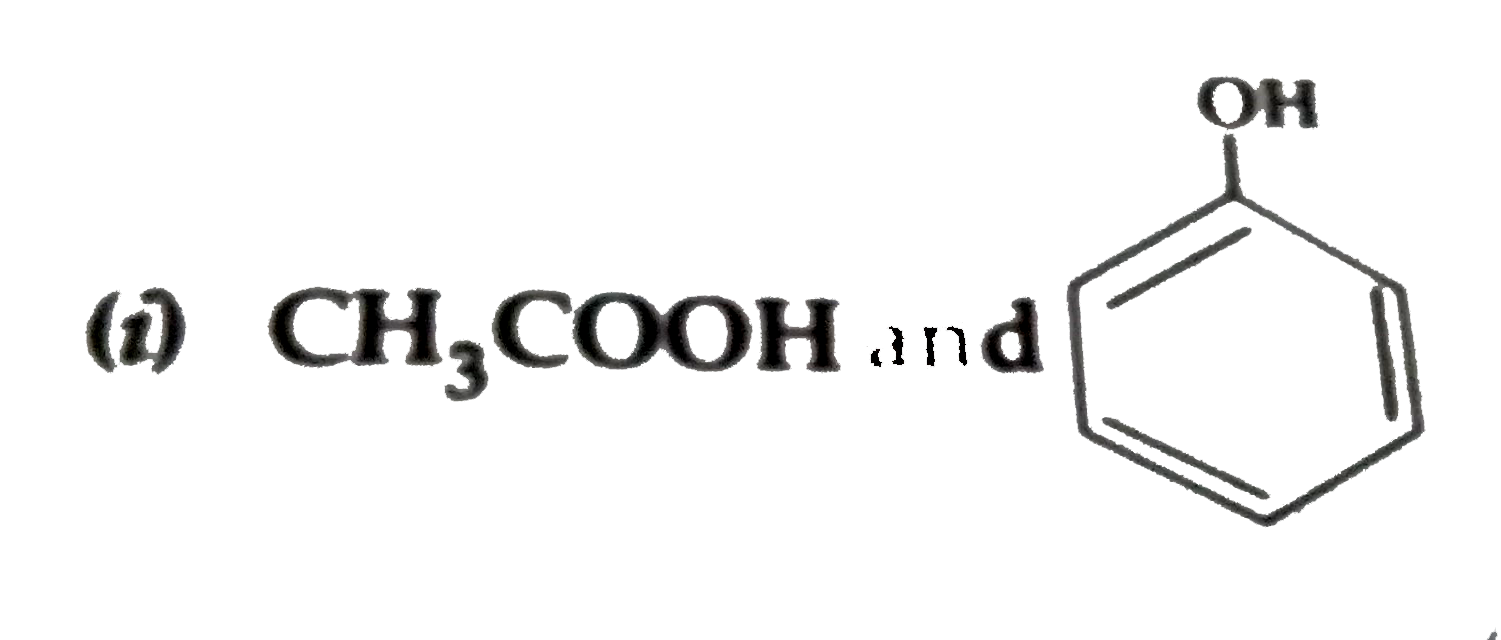Complete the following reactions :
(i) C6H6+CH3Cl,anhyd.AlCl3→
(ii) CH3C≡CCH3(i)O3−−−−−−−→(ii)Zn,H2O
(iii) CH3CH2C≡CHacidicKmnO4−−−−−−−→Heat
Let's complete the reactions step by step:
(i) Reaction of Benzene with Methyl Chloride in the presence of Anhydrous AlCl3
1. Identify the reactants: The reactants are benzene (C6H6) and methyl chloride (CH3Cl).
2. Recognize the reaction type: This is a Friedel-Crafts alkylation reaction, where an alkyl group (methyl in this case) is introduced to the aromatic ring.
3. Role of AlCl3: Anhydrous AlCl3 acts as a Lewis acid catalyst that helps generate a more reactive methyl cation (CH3+).
4. Reaction mechanism:
- The AlCl3 coordinates with CH3Cl to form a complex, facilitating the cleavage of the C-Cl bond.
- The methyl cation (CH3+) then attacks the benzene ring, resulting in the formation of toluene (C7H8).
5. Final product: The product of this reaction is toluene (C6H5CH3).
Complete Reaction:
C6H6+CH3ClAlCl3−−−→C6H5CH3
(ii) Ozonolysis of 2-Butyne followed by Reduction
1. Identify the reactants: The reactant is 2-butyne (CH3C≡CCH3).
2. Ozonolysis: This reaction involves the cleavage of the triple bond using ozone (O3).
3. Reaction mechanism:
- Ozone adds to the triple bond, forming a molozonide intermediate.
- The molozonide rearranges to form ozonide, which is then reduced by Zn in water.
4. Final product: The ozonolysis of 2-butyne followed by reduction yields butane-2,3-dione (CH3C(=O)C(=O)CH3).
Complete Reaction:
CH3C≡CCH3O3−→CH3C(=O)C(=O)CH3
(iii) Oxidative Cleavage of 1-Butyne with Acidic KMnO4
1. Identify the reactants: The reactant is 1-butyne (CH3CH2C≡CH).
2. Oxidative cleavage: The reaction involves the oxidation of the alkyne using acidic KMnO4 (potassium permanganate).
3. Reaction mechanism:
- KMnO4 oxidizes the alkyne, leading to the formation of carbonyl compounds.
- The terminal alkyne will be oxidized to form an aldehyde, while the internal alkyne will be oxidized to form a ketone.
4. Final products: The products of this reaction are acetone (CH3C(=O)CH3) and acetic acid (CH3COOH).
Complete Reaction:
CH3CH2C≡CHKMnO4,acidic−−−−−−−−−→CH3C(=O)CH3+CH3COOH
Summary of Reactions:
1. (i) C6H6+CH3ClAlCl3−−−→C6H5CH3 (Toluene)
2. (ii) CH3C≡CCH3O3,Zn/H2O−−−−−−−→CH3C(=O)C(=O)CH3 (Butane-2,3-dione)
3. (iii) CH3CH2C≡CHKMnO4,acidic−−−−−−−−−→CH3C(=O)CH3+CH3COOH (Acetone and Acetic Acid)
2. Recognize the reaction type: This is a Friedel-Crafts alkylation reaction, where an alkyl group (methyl in this case) is introduced to the aromatic ring.
3. Role of AlCl3: Anhydrous AlCl3 acts as a Lewis acid catalyst that helps generate a more reactive methyl cation (CH3+).
4. Reaction mechanism:
- The AlCl3 coordinates with CH3Cl to form a complex, facilitating the cleavage of the C-Cl bond.
- The methyl cation (CH3+) then attacks the benzene ring, resulting in the formation of toluene (C7H8).
5. Final product: The product of this reaction is toluene (C6H5CH3).
C6H6+CH3ClAlCl3−−−→C6H5CH3
2. Ozonolysis: This reaction involves the cleavage of the triple bond using ozone (O3).
3. Reaction mechanism:
- Ozone adds to the triple bond, forming a molozonide intermediate.
- The molozonide rearranges to form ozonide, which is then reduced by Zn in water.
4. Final product: The ozonolysis of 2-butyne followed by reduction yields butane-2,3-dione (CH3C(=O)C(=O)CH3).
CH3C≡CCH3O3−→CH3C(=O)C(=O)CH3
2. Oxidative cleavage: The reaction involves the oxidation of the alkyne using acidic KMnO4 (potassium permanganate).
3. Reaction mechanism:
- KMnO4 oxidizes the alkyne, leading to the formation of carbonyl compounds.
- The terminal alkyne will be oxidized to form an aldehyde, while the internal alkyne will be oxidized to form a ketone.
4. Final products: The products of this reaction are acetone (CH3C(=O)CH3) and acetic acid (CH3COOH).
CH3CH2C≡CHKMnO4,acidic−−−−−−−−−→CH3C(=O)CH3+CH3COOH
1. (i) C6H6+CH3ClAlCl3−−−→C6H5CH3 (Toluene)
2. (ii) CH3C≡CCH3O3,Zn/H2O−−−−−−−→CH3C(=O)C(=O)CH3 (Butane-2,3-dione)
3. (iii) CH3CH2C≡CHKMnO4,acidic−−−−−−−−−→CH3C(=O)CH3+CH3COOH (Acetone and Acetic Acid)
Topper's Solved these Questions
- HYDROCARBONSBOOK - MODERN PUBLICATIONCHAPTER - HYDROCARBONSEXERCISE - COMPETITION FILE (OBJECTIVE TYPE QUESTIONS) (Integer Type Questions)
4 Videos
- HALOALKANES AND HALOARENESBOOK - MODERN PUBLICATIONCHAPTER - HALOALKANES AND HALOARENESEXERCISE - UNIT PRACTICE TEST
12 Videos
- HYDROGENBOOK - MODERN PUBLICATIONCHAPTER - HYDROGENEXERCISE - UNIT PRACTICE TEST (for Board Examination)
9 Videos
Similar Questions
Knowledge Check
Complete the following reactions:
(i) C2H5I+H2Zn−Cu−−−−→C2H5OHK
(ii) CH30COONa+H2OElectrolysis−−−−−−−→Y
(iii) CH3CH2CH2CH2CH2CH3Cr2O3/Al2O3−−−−−−−−→773KZAX=C2H6,Y=C2H6,Z=C6H6BX=CH4,Y=CH30COOH,Z=CH3CH3CX=C2H6,Y=CH4,Z=C4H10DX=C2H6,Y=CH4,Z=C5H10
Complete the reactions :
(i) CH3−C≡CH+H2Pd,BaSO4−−−−−−→quinoline
(ii) CaC2+H2O→
(iii) CH3CH=CHCH3O3−−−−→Zn,H2O
(iv) HC≡CHAlk.KMnO4−−−−−−−→
(v) CH3C≡CHhot.KMnO4−−−−−−→
View SolutionComplete the following reactions :
(i) CH3−C≡C−PhHg2+,H+−−−−−−→
(ii)
(iii) CH3CH2C∣CH3=CHCH3O3,−−−−→Zn,H2O
View SolutionWrite the main product (s) in each of the following reaction :
(i) CH3−CH3∣C∣CH3−O−CH3+HI→
(ii) CH3−CH=CH2(i)B2H6−−−−−−−−−−−→(ii)3H2O2/OH−
(iii) C6H5−OH(i)aq.NaOH−−−−−−−−→(ii)CO2,H+
View SolutionWrite the product of following reactions :
(a) CH3−H3C∣C=CH3∣C−CH3O3−−−−−→Zn/H2O , (b) CH3−C≡C−CH3O3−−−−−→Zn/H2O
( c) CH3−C≡C−CH3O3/H2O2−−−−−→ , (d) CH3−CH3∣C=CH−CH3O3/H2O2−−−−−→
View SolutionComplete the following reaction:
(i) CH3−C∣∣O−CH3CH3,MgBr−−−−−−→Dry etherAH+−−→H2OB
(ii) CH3−CH2−CH2−CHOH2/Ni−−−→A
View SolutionComplete the following reactions:
(i) CH3−CH2−O−CH3| C | CH3−CH3−HIHeat−−→
View SolutionPredict the products of the following reactions :
(i)CH3−C∣CH3=OHCN−−→?
(ii)C6H5−CH2CH3(a)KmnO4/Koh−−−−−−−−−−→(b)H+?
(iii)CH3COOHNH3/Δ−−−−→?
View Solution



